Just Do It
By Tony Conrad, March 3, 2016
This past October, I attended a fantastic panel on diversity at True Ventures’ Founder Camp, an annual gathering of the over 200 top-notch Founders in the True portfolio. One takeaway from this dynamic discussion was that as a Founder and CEO, it’s my job to pause from time to time and look at our team to assess not only if our individual team members are all great, but also if we have the right team composition. Do we have the right roles identified, and the right people filling these roles? Does the office look like a place where anyone would be comfortable? Do team members see everyone behaving equally and respectfully toward one another? Do we have the right experience balance between seasoned and young people, and—importantly—do we have gender balance?
I firmly believe that bringing together a diverse mix of people creates a stronger culture. Strong culture leads to better execution, and better execution enhances your ability to achieve your vision. A diverse workplace is a “table-stakes” commitment for all companies, especially when you have a diverse customer base like we do at about.me. Since we are taking a user-centered approach to product design, a diverse team means we have diverse ideas in brainstorming sessions and product meetings, which is a strength when problem-solving.
When we spun about.me out of AOL three years ago, our team was nearly 100% men in their early 30’s and 40’s. Each team member was excellent, but we didn’t represent the community we were creating. As a result, we needed to prioritize and invest in two areas in which we were severely lacking: 1) more youth and 2) more women. Looking at about.me today, I am very happy with the mix of experience, age and gender diversity on our team. Our leadership team is 50 percent women and 50 percent men, our company is 1/3 women and 2/3 men, and we span 4 decades with an average age of 32.1 years old. It’s not perfect, but we took a huge step toward our goal of a balanced, diverse team.
I also took a look at about.me‘s board of directors. True Ventures participated in an industry-wide study last year that called out the egregious lack of women in board leadership roles. In my role as a venture capitalist, I was embarrassed. But, in my role as a Founder and CEO, I realized I had the opportunity to help change things. So we filled an open position on our board with an outstanding woman leader, Veronica Belmont, who is an invaluable advisor to our company.
As CEO, I felt that hiring more young professionals and more women was an important first step, but it was just a beginning. As a leader in your company, you constantly need to push yourself to create a balanced environment that aligns with the culture you’re creating. A culture that gets the most from its people creates the realities that facilitate their contribution. We want to create a culture that makes everyone feel comfortable—one that is patient, inclusive and values diverse backgrounds. We not only look to create an inclusive physical environment, but also support flexible ways of working. Roles aren’t “gender-expected.” We have parents, both fathers and mothers, who can telecommute. We also found significant positive correlations between work performance and eating lunch as a team each Monday. A recent article in The New York Times Magazine highlighted study findings that “firehouses where firefighters ate together reported more cooperative behavior; they were better at their jobs.”
As a CEO in an early-stage startup, I believe it’s your responsibility to think about your company culture and make a decision about diversity. Diversity leads to “full-stack” improvements because the benefits are across the board. It helps you recruit top talent. It leads to employee satisfaction so you can retain talent. It improves decision-making. I would even say it gives you a competitive advantage, especially in the tech industry. If you’re hiring women, or people of color, or young people, or older people just to fill quotas, you’re not going to be successful. But if you understand the value it creates—if you understand how important it is for your team to have a diverse set of role models and your company to have a diverse set of ideas—you will be so much better for it.


